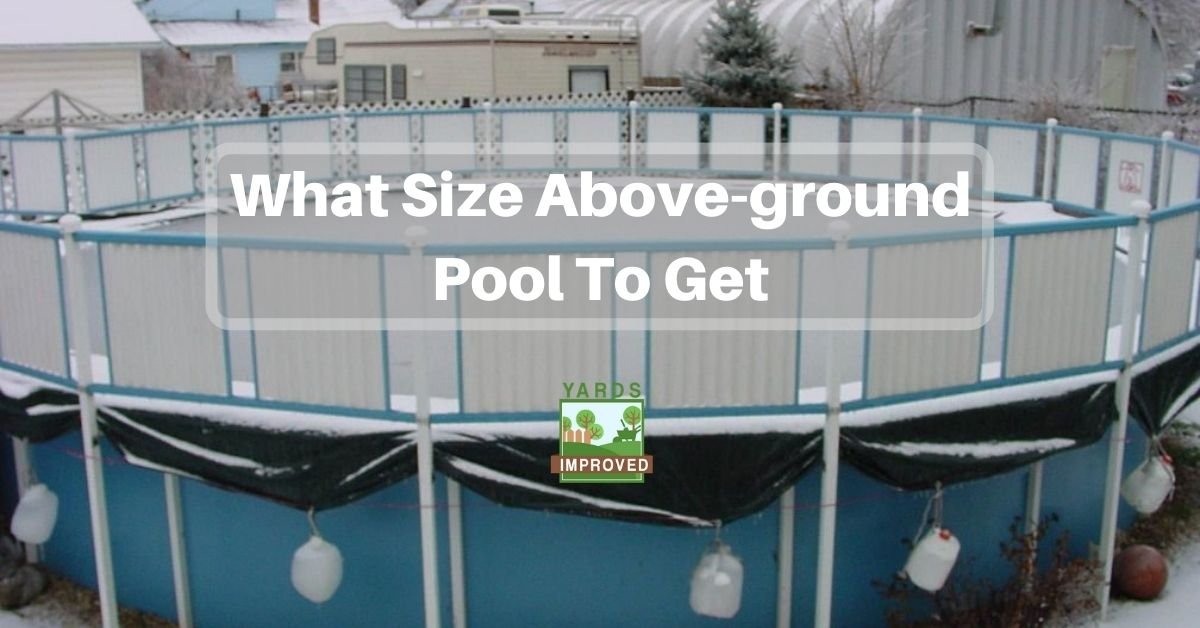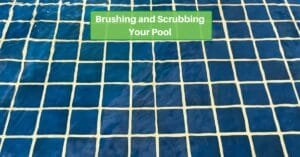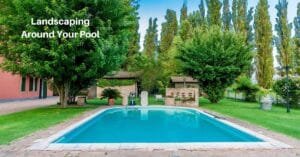Once the temperature begins to rise, the idea of plunging into the pool becomes attractive. There’s nothing like being able to take a dip after a day of hard work or to relax on the weekend. But it can be a drag to head out to a swim club, and public pools, even when nice, can be crowded. So adding a pool to your yard makes perfect sense!
It’s not always possible to have an inground pool, so an above-ground pool makes sense in a lot of circumstances. You want to have one that will suit your needs, of course. What size should you get? That’s going to depend on a lot of factors, some of which you have more control over than others. Let’s take a look at the key factors to consider when deciding how big, and what shape, pool you should get.
You’re going to need to test the water in your pool. Check out the top water testing kits on the market!
What Are Your Options for Size and Shape of Above-ground Pools?
Above-ground pools are almost always smaller than their inground counterparts. But you can still find models that have a decent size. You’re not going to be able to swim Olympic-type laps, but you’ll be able to enjoy and perhaps teach your children to swim.
There are also a variety of shapes available, although round and oval pools account for almost all the pools. Oval pools typically are more expensive than round ones of roughly the same volume, though, because they require more parts to form the shape and hold them together.
A smaller round pool may measure 15 to 18 feet in diameter (that is, in a direct line across the center of the pool). An oval pool, of course, will have a longer length and shorter width.
Looking for a smaller, less permanent way to cool off? An inflatable pool might be for you!
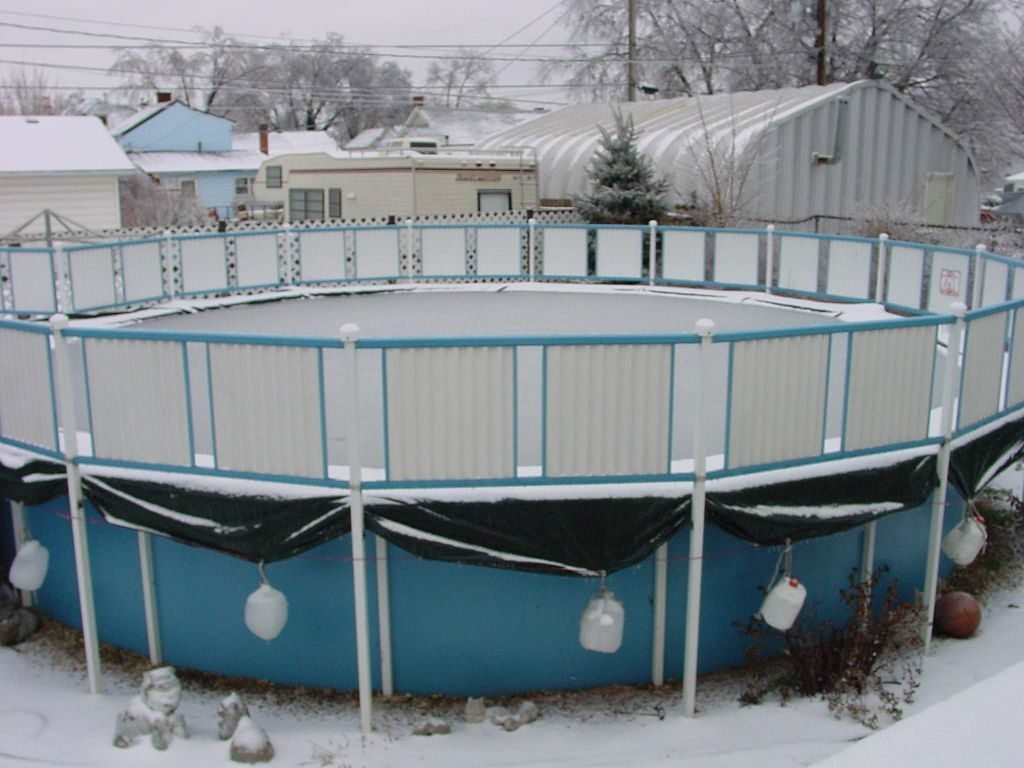
Remember that these are the measurements of the water inside the pool. When it comes time to find a place for the pool, you’ll have to add about three feet on each side for the supports and other equipment that hold the pool together. So a 15-foot diameter pool requires about 21 feet (six feet extra total, since it’s three feet on each side). And that extra space doesn’t take into account the addition of a pool deck.
We’ve seen round pools up to 30 feet in diameter, but there are probably larger ones available. At 30 feet, though, you can get a lot of enjoyment out of it. You can do more than relax or splash, at least. It will take a couple of strokes to get across it. It’s not to train in, but it still lets you move. And of course, it can hold a few people.
It’s usually recommended to have about 15 square feet of surface area per person. A pool that’s 15 foot in diameter has about 175 square feet of surface area so you could have 11 or 12 people in the pool. A 30-foot pool has about 700 square feet of surface area.
As a refresher for calculating, the area of a circle = π x r2, where π = 3.14 and r is the radius (½ of the diameter). For a rectangle, the area is length x width. You can find the area of an oval by π x r (long way) x r (short way).
Pools have two or three measurements listed. Round pools will be listed with diameter x depth. That is, 18’ x 48” means the pool is 18 foot across and 48 inches deep. Oval or rectangular pools will usually have three measurements: length x width x depth.
If you want to know how many gallons your pool holds, we’ve put together some charts for you. You simply need to know the pool’s diameter or length and width. There’s even a calculator to figure out how much it will cost to fill!
What To Consider When Making Your Choice
There is a lot to consider when choosing an above-ground pool. Some factors you’ll have little control over while others allow for a lot more freedom.
Space
First, you have to consider the space you have available. While you may want to get the biggest pool possible, your yard is a finite space. Some yards may have a surplus of space, but others will have to be concerned that the pool will actually fit in what they have available. Remember, you have to leave the 6 extra feet beyond the diameter of the pool.
You also want to also leave space to walk around the outside of the pool – that is, you don’t want it right up against fences or walls. In some places, you may even be legally required to keep it a certain distance from the property line. All of that has to be taken into account when calculating the size of the pool.
You might even want to have decorations around the pool, such as shrubs, flower beds, or benches. If you’re dead set on adding features like these, you’ll have to account for that space as well.
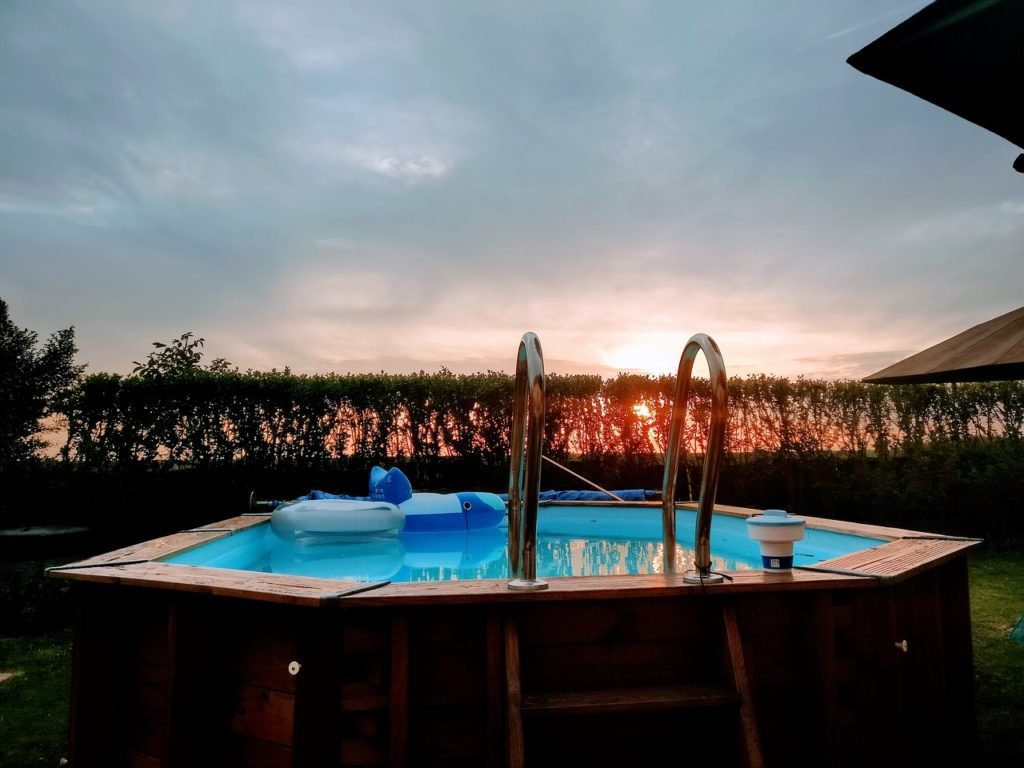
You also need to have level space for your pool. You can’t build it on an incline. So you have to take this into account when assessing how much room you have to add your pool.
Cost
After determining how big a pool you could possibly have, you also have to consider what you can afford. Remember that you’ll not only have to buy the pool, but you’ll also face higher water and electric bills as well as supplies.
An above-ground pool does cost a lot less than an inground pool. The average for a quality above-ground pool is about $7000, including labor. For an inground pool, it’s around $30,000. You can get smaller “set and fill” pools at big box stores for $100 – $800, but these generally last no more than three summers.
Electricity costs are hard to nail down. Homes with pools do spend a lot more – close to 50%, in fact – in electricity. Some of that is for the pool, but these also tend to be larger homes with more children, so there are other expenses involved, too.
The cost of filling your pool will also vary since the price of water is different based on where you live. There may also be a charge for “overuse”. The bigger your pool, of course, the more it will cost to fill. It’s probably best to consult with your local water department. Fortunately, filling the pool isn’t something you do often. In colder environments, you may have to drain the pool partially in winter and refill it in spring. Other than that, you’ll only have to top it off to recover from evaporation.
Pool chemicals are another important cost. It can run around $100 a month (during the season) to treat your pool. It’s essential to keep up the treatment so that the water is healthy to swim in.
Use
You may be more hemmed in by how big your yard is and what you can afford, but of course, you need to take into account how you plan to use the pool.
This depends also on how many people in your home will make use of it, and how often or how many guests you like to have.

If you just want to jump in and cool off yourself or with your spouse, you can get by with a smaller pool. Once you add children, you’ll want to consider a larger pool.
Got toddlers and infants you want to take swimming? Swim diapers are a must!
But if you like to have guests over, you’ll again have to consider a larger space. Again, about 15 square feet of surface area should be allowed for each person.
Remember also the difference between being able to take a dip to cool off and actually swimming. A 15-foot-diameter pool is less than three body lengths for most people, so only the youngest children could “swim” across it. A 30-foot pool at least allows for a few strokes.
Safety
Particularly when children are in the household, pool safety has to be taken into account. You need to be sure that children, pets, and others who shouldn’t be there can’t access the pool without supervision.
This means that you have to consider how the pool is positioned and how you can restrict access. This can include removable ladders, fences, and other means.
Also, you have to consider that in a larger or deeper pool, it’s tougher to get out. Choose a pool appropriate for the size and ability of your swimmers, while also recognizing that young children will grow into it. They’ll just need even closer supervision – not to say that they should ever be unsupervised!
Conclusion
An above-ground pool is a fun and relaxing addition to your yard. There are many sizes to suit your own needs, space available, and budget. With proper care, you, your family, and your friends will be able to cool off and enjoy this fantastic addition!

